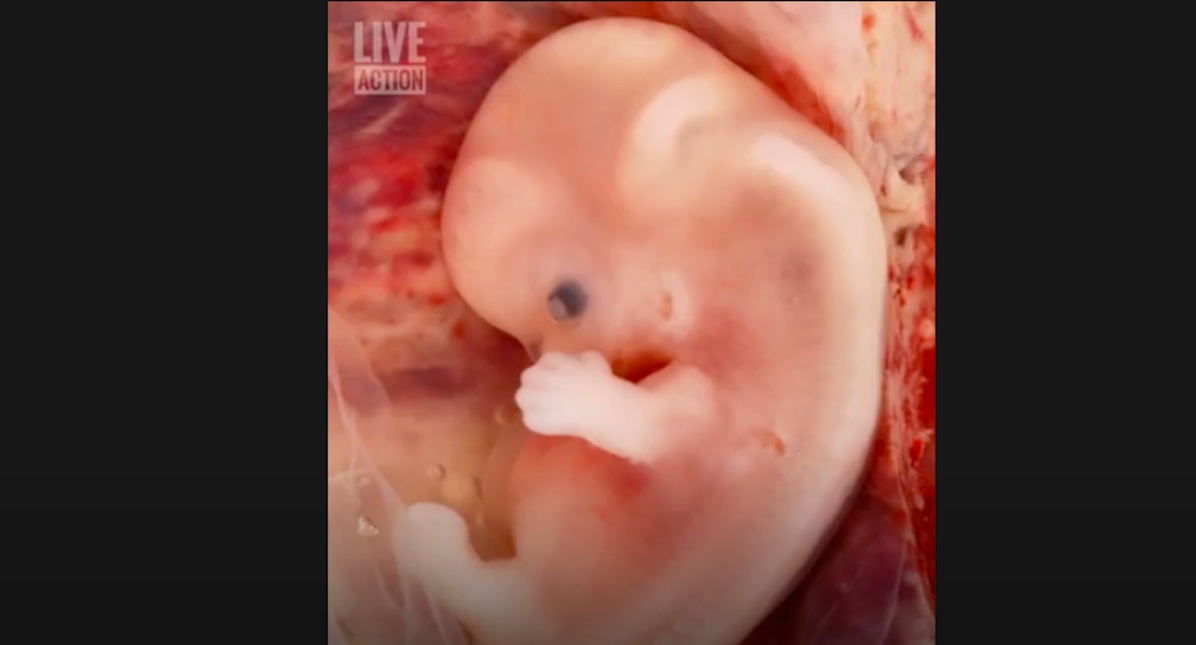A recent article published by VICE bemoans how images of preborn children are effectively used by the pro-life movement as “powerful icons.” Originally written by Amarens Eggeraat for VICE Netherlands, Eggeraat detailed how groundbreaking work in photography allowed images of babies still in their mothers’ wombs to be seen for the very first time. This, combined with the advent of ultrasound technology, made a huge difference in how the public sees pregnancy and, by extension, preborn human beings.
It is true that the pro-life movement does not shy away from using medically accurate images of preborn children. While Eggeraat doesn’t acknowledge this, the reason for this is often to dispel the inaccurate claims of pro-abortion advocates. Even notable people in the spotlight like Whoopi Goldberg, Melissa Harris-Perry, and former Planned Parenthood president and CEO Cecile Richards frequently deny the science of preborn human life. Abortion advocates dehumanize preborn children as “clumps of cells” or “products of conception,” and ignore scientifically accurate information about fetal development during pregnancy. Yet none of this is mentioned by Eggeraat, who instead complains that pro-lifers dishonestly display photos featuring babies at later gestational ages, when most abortions take place early in pregnancy.
READ: How one photo of a preborn baby helped to make future generations pro-life
“Besides being morally loaded,” she claims, “the visual association between these tiny babies and abortion is also scientifically incorrect, since the vast majority of procedures are carried before 13 weeks.” She adds, “Before ultrasound technology, anti-abortion activists often relied on religious or moral arguments against safe access to abortions. But the powerful imagery of prenatal scans helped them strengthen their cause – triggering people’s protective instincts towards what looked like a tiny unborn child.”
Eggeraat complains that the fetus is a “powerful icon” which doesn’t have a comparable match in the pro-abortion movement. But an image of a preborn child would not be powerful if it depicted nothing more than the formless shape of dead cells. The human embryo and fetus “look[] like a tiny unborn child” because that is what they are. Images of preborn children are powerful precisely because they make the humanity of these children evident.
Despite Eggeraat’s claims, pro-lifers have displayed powerful images of preborn children before 13 weeks for a very, very long time, countering the “clump of cells” propaganda. An iconic photo of a preborn child’s feet at 10 weeks, today best known as the “Precious Feet,” was taken by Dr. Russell Sacco in the 1970s, and was later publicized by well-known pro-life stalwart Dr. John C. Willke. It became one of the most well-known photos of an aborted child, and was even turned into a lapel pin.
The photo is striking because it shows the incredible development of a child still in the first trimester of pregnancy — just like the children seen in the Live Action video below, in their first 10 weeks of life:
The Endowment for Human Development (EHD) is a non-profit organization dedicated to the science of fetal development, remaining neutral on controversial bioethical issues like abortion. EHD acknowledges that the preborn child is a life completely separate from his mother, even at the earliest stages of development, writing that, “[b]iologically speaking fertilization (or conception) is the beginning of human development.”
This video from EHD shows the heart of a preborn child which begins beating at just three weeks past fertilization (16-22 days). Three primary sections of the brain are also identifiable at this point, which is typically around the time a woman discovers she is pregnant.
By six weeks, brain waves can be measured, and the baby’s kidneys and liver are formed. At seven weeks, the preborn child can respond to touch. At eight weeks, the baby’s dominant hand (right or left) is determined, and he begins sucking his thumb at nine weeks. Unique fingerprints are formed by 10 weeks after fertilization.
Images of preborn children are “powerful icons” because they make the science behind fetal development and embryology clear for everyone to see. As MSNBC’s Joe Scarborough explained, younger Americans are more likely to be pro-life thanks to these images, and the ability to see for themselves what preborn children actually look like.
“[F]or the past decade, younger Americans have been going in and they have been seeing 3-D imagery where they can look into the womb,” Scarborough said. “If some activist said, ‘Your child is a lump,’ I must tell you, I’ve had four kids, I’ve never once had a doctor go to me, ‘we’ve got your lump, let me show you your lump, look at your lump’s profile.’ This is an example of science, technology changing that is going to change the politics of abortion. This is an issue that culturally is going to change. Americans, younger voters are going to become more conservative on abortion because they see their child very early on in the womb.”
Displaying accurate photos and videos of preborn children is one of the most powerful ways to change hearts and minds on the abortion debate. These photos expose the lies and euphemisms used by abortion advocates to defend abortion. The images are powerful, as Eggeraat said, but they’re powerful for a reason. It’s because they make it crystal clear that abortion always takes a human life.







